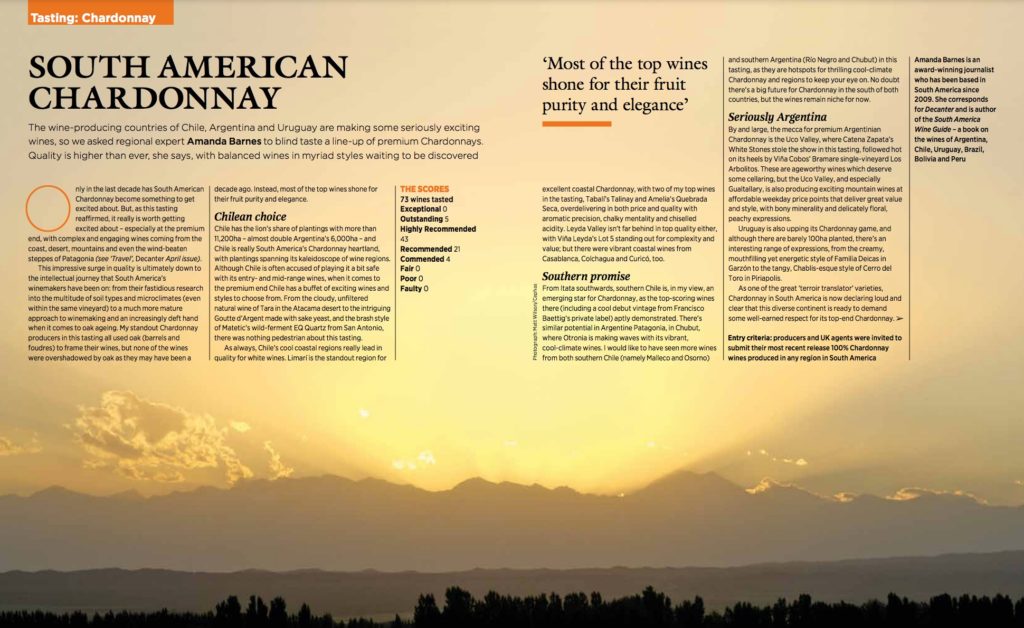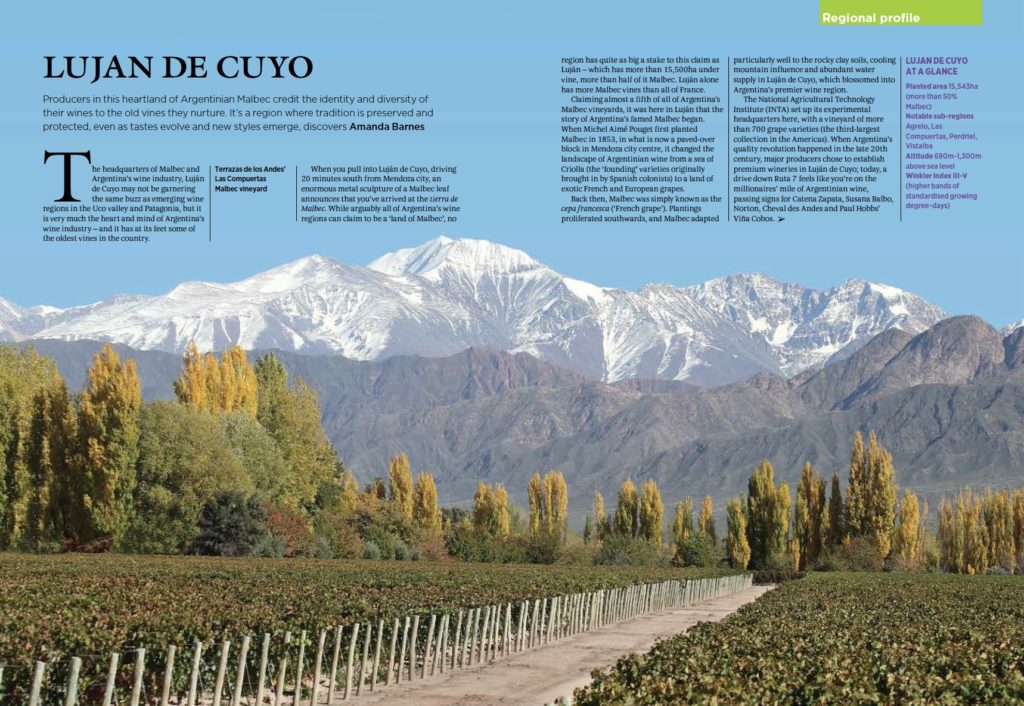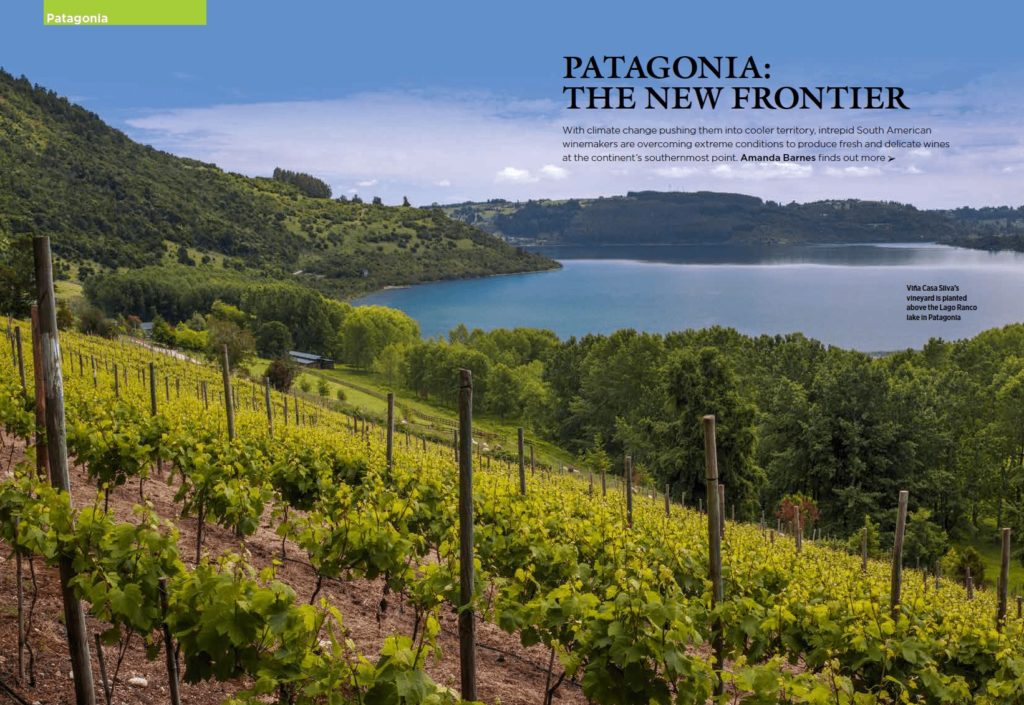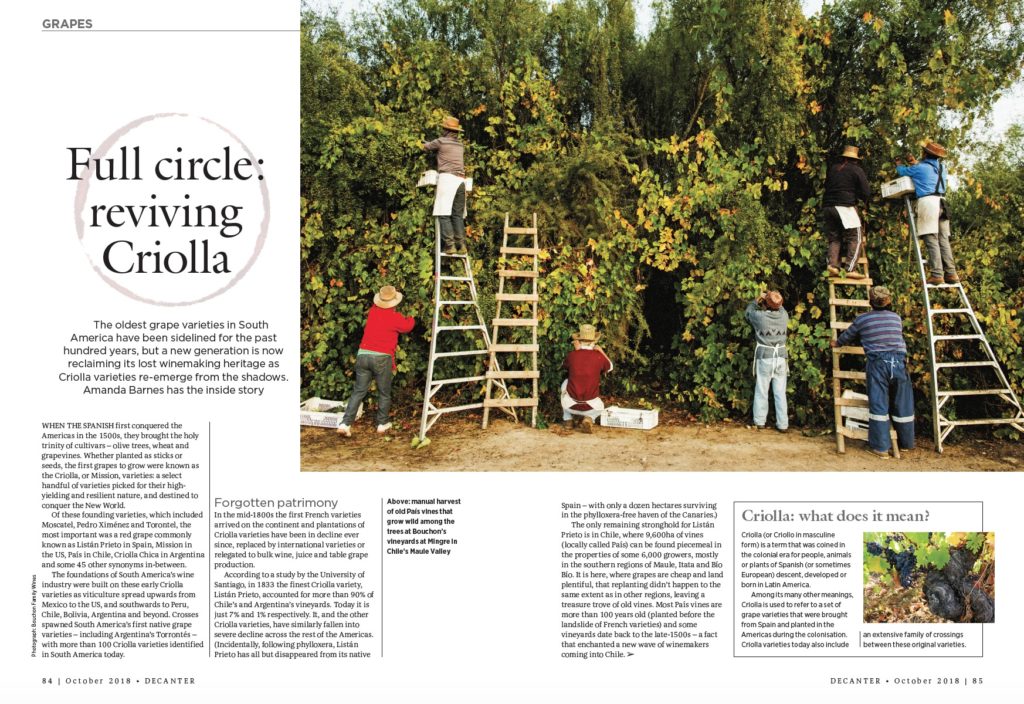Decanter: South America’s winemakers take flight

Winemakers in South America are embarking on a new era – one of quiet self-confidence and curious self-discovery, bringing forth some of the most exciting and individual wines yet. Distinctive regional personality is at the core of this new movement and it highlights a strong departure from the varietal – and style-driven wines that dominated […]
Decanter: South American Chardonnay Tasting

The wine-producing countries of Chile, Argentina and Uruguay are making some seriously exciting wines, so we asked regional expert Amanda Barnes to blind taste a line-up of premium Chardonnays. Quality is higher than ever, she says, with balanced wines in myriad styles waiting to be discovered. Only in the last decade has South American Chardonnay […]
Decanter: Focus on Luján de Cuyo

Published in Decanter June 2020 Producers in this heartland of Argentinian Malbec credit the identity and diversity of their wines to the old vines they nurture. It’s a region where tradition is preserved and protected, even as tastes evolve and new styles emerge, discovers Amanda Barnes. The headquarters of Malbec and Argentina’s wine industry, Luján […]
Patagonia: South America’s new frontier. Decanter 2019

Written for Decanter Magazine, October 2019 In the last decade, winemakers in Chile and Argentina have moved beyond what was seen as the final frontier for South American viticulture — into the cool climates and wild terrains of Patagonia. Growing confidence and expertise; a quest for lower temperatures and greater water availability in the face […]
The ‘Criolla’ wine revival: a taste of South American wine history

The oldest grape varieties in South America have been sidelined for the past hundred years, but a new generation is now reclaiming its lost winemaking heritage as Criolla varieties re-emerge from the shadows. Amanda Barnes has the inside story… Published in Decanter Magazine, October 2018 When the Spanish first conquered the Americas in the 1500s, […]
Interview: Daniel Pi

Never more comfortable than when breaking the winemaking mould, the Peñaflor veteran is a central figure in the story of Argentina’s wine industry, as Amanda Barnes reveals in this interview with Daniel Pi… Published in Decanter magazine, October 2018 Overseeing the production of more than 200 million litres of wine each year, Daniel Pi doesn’t […]
Down where it’s wetter: Argentina’s wetlands

The best way to see the Ibera wetlands is from the sky. At the cockpit window of a light aircraft, the flooded plains of Argentina’s next national park roll out before us like a carpet threaded with blues, greens, and gold. A single white boat appears like a toy or maybe an abandoned piece of […]
Wine festivals in South America

South Americans know how to throw a party, and almost before the first grape has been picked, the harvest is being celebrated with wine festivals across the Southern Cone. Traditionally the fiesta de vendimia (harvest festival) was a small celebration in the villages to celebrate the end of the harvest and a good vintage – […]
Argentina’s new appellations

Written for SevenFifty Daily, August 2017 The freedom of the New World, and its lack of draconian appellation rules, might be much envied by producers in the Old World, but winemakers in Argentina are seeking more rigorous legislation for its regions. As a country with a 500-year history of vinification, Argentina is by no means […]
Climate change: The next frontier

Some areas of Chile and Argentina are experiencing changes in the frequency and severity of weather extremes. While many winemaking regions struggle to adapt, there are some visionary producers who see it as an opportunity to explore. Amanda Barnes investigates… Decanter July 2017Decanter July 2017 THE WINE MAP is undeniably changing. The worldwide phenomenon of […]

